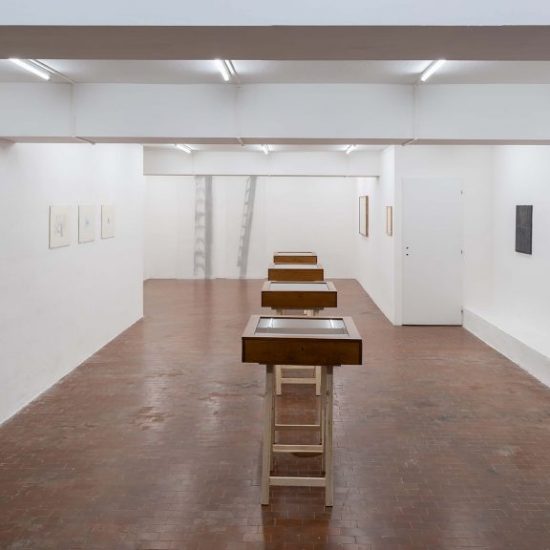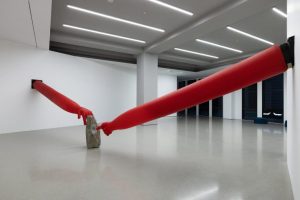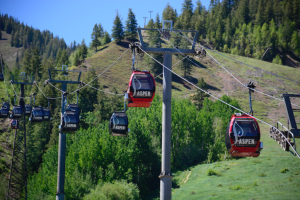HANS-CHRISTIAN DANY
But these are train-tickets. Why should I be interested in them?
ARIANE MÜLLER
Well, it’s called illegal travel documents. I don’t know, are you interested in that?
HANS-CHRISTIAN
That sounds more interesting. When were they forged? They look older.
ARIANE
For about five years, six years, in the late 80s to mid 90s when I moved to Berlin. It was part of a project that I was working on then, it was then part of a necessity.
HANS-CHRISTIAN
What is it now, a project or a necessity?
ARIANE
A consideration of presenting one’s own person as an artist as fictitious, perhaps adding other people, a peculiar preference for the fictitious person of the conference participant, also playing oneself, which required more publicity. Giving them to others as I also did was a desire to enforce that fictionality,
A forgery is an appropriation, an appropriation of another identity, the false passport, the false name, the false artist painting under another name, the false 1st class traveler—because they are 1st class tickets, an abandonment of one’s legal identity, because one is traveling as an illegal. A step into something uncertain. But the ticket, like the passport, is only pending until it has been validated by the ticket inspector and thus recognized, in this case evaluated, enhanced by the validation.
It then became an understanding between the inspector and the passenger, the inspector recognized him as a passenger.
The moment they were evaluated, they were, so to speak, out of this incertainty, they were no longer illegal, their fictionality was lifted. They were part of the real world. Such a transformation must happen in everyone who travels with a false passport, – this moment when the world recognizes one, even if in the pretended identity, and then it becomes one’s own and that it is false, based on a self-empowerment, is closed very deeply in one’s self. Now they are, so to speak, only representations, representations of a movement on its own bases, on the basis of its own possibilities
Every single ticket is also a journey, all the destinations of course stand for places,
HANS-CHRISTIAN
Today everything in the world seems so unreal that it’s easy to see every action as practical. Did you experience it differently back then? In the sense of a counterworld, that also seems to me a strangely old- fashioned idea today, where the world is so hard to recognize.
ARIANE
Well, not a counterworld, rather a world whose realities are to be determined by one as much as by others. Additionally, it was also about representing movement, that is, not painting pictures that express a movement, but making a movement yourself. But this is not a historical document, it’s an exhibition now, and the exhibition is primarily about representing movement.
Or the punctum that art demands, as a mode of description, is always opposed to movement. Every illustration gives new duration to the movement. Hence all the perfomative approaches, the calls to action, concepts, heck, a whole series of considerations attached to it.
There are many such notions in art: performativity, performance, but since one was basically acting on this ground, it didn’t seem important at all, or it wasn’t important at all, to make art. Rather—in the old way—to abolish these boundaries.
HANS-CHRISTIAN
Now the ticket is an image that includes its double bottom and floats in the imagination.
ARIANE
Yes, but also, so to speak, a proof of the abolishability of joined boundaries, a kept possibility that makes a promise that other boundaries will also turn out to be non-existent.
HANS-CHRISTIAN
Then you call painting forgery, which would be a very conceptual term of painting.
ARIANE
It’s a very applied concept of painting, like it’s an applied concept of chemistry, but in the sense that it comes from color vision, the resolution of colors, on shortcuts that suggest reality to the eye, while technically none of it is true, like painting water with oil, which is what painting has been doing for a long time, you paint something else with something else. It wasn’t a technical process, after all, but a purely manual one, you needed next to nothing. But it was above all about fictionality. Fictionality of identities, this existence built on sand has haunted me all my life
HANS-CHRISTIAN
Yes, that struck me in the first part of the conversation, that you move everything so far away from yourself and contextualize it. It’s also biographically interesting, this moment of movement that is linked to falsification. I find it quite symptomatic as an attitude to life. As artists, we feel like impostors, moving through the world with forged tickets?
Feeling like an impostor is probably a basic mood in the control society, but there’s something to be made of it. On the one hand, it’s a good way to get around, and on the other hand, this reality doesn’t really deserve the whole truth or the upright look in the face.
ARIANE
That’s very pessimistic, and to meet each other groveling can’t be it.Then: It does have an effect on you. Especially what constitutes economic constraints, so also everything that restricts a radius. The question was whether it has become more difficult, but only yesterday I read that the number of passports identified as fake at the EU border has fallen sharply, which means that now more passports are not blown up.
HANS-CHRISTIAN
But this year we have to fight tooth and nail against the evaluation, this is the machine that is supposed to keep us all down.
ARIANE
Not evaluation, validation. That means that it is recognized. But evaluation, of course, comes into it, although not in the case of counterfeiting. After all, the counterfeit is no longer a counterfeit at the moment it’s through. Anyway, it is not directly biographically pushed away by me.The biographical note about documents is just a different description than the self-description, about the diary, the drawing. Everything is missing in it, the feeling in the compartment, when the card is accepted, the necessity of the movement, which is difficult to represent at all.
HANS-CHRISTIAN
How would you put it today?
ARIANE
I’m not at all sure that it’s always possible to go everywhere now, possibly we’ve simply brought ourselves into the possibility of traveling using other keys now. So that’s quite similar. Now the key is not counterfeiting, now the key is to write a book, whereby you are invited, or to make a magazine, an exhibition. That’s the key now, but for someone who is even further out, like me at that time, that was not possible yet, so the key was forging. Yes, it’s probably other wishes now.
What still interests me about it, to this day, is more also the willingness to play oneself in it, the feeling of being completely at one’s own presence of mind when one is in this non-secured mode.
HANS-CHRISTIAN
It’s also the exciting thing, in art, this floundering, no longer knowing what you’re doing. Putting something on a blank page and claiming that it is, even though you don’t know what it is.
ARIANE
There, too, only this document, the drawing, connects you to the world and also whether it goes through, a kind of validation that actually only works on the outside, this feeling of concentration that was also in the confrontation of the drawing/falsification/ticket with the conductor.
When you make the ticket, that’s a feat of concentration, also a moment in which you say, it’s good now, then here a bit, that bit. Some things are screwed up from the start, but can be improved, even though the mistake is still inside.
HANS-CHRISTIAN
Well, but that’s also the point of drawing, to get out exactly at the moment when the peak of tension is reached.
ARIANE
That’s the drawing, but then there’s the drawing the next day, and that’s what I’ve been more interested in lately. So that’s made now, but then the next day it’s already taken away from you.
HANS-CHRISTIAN
But in drawing, the mistake can be just the something. In forging, an error remains an error, doesn’t it? AM: But you have to get away with it somehow.
HANS-CHRISTIAN
You usually negotiate your way through with yourself. There are sheets with which you can get through to others, but it’s no use if you can’t get through to yourself. You can entertain yourself with it, show off your skills or others, but it doesn’t make you content. You only become that when you risk yourself, I think.
ARIANE
Yes, that’s also the point of the fake tickets.
(Extract of a conversation between Hans-Christian Dany and Ariane Müller on the occasion of Ariane Müller, Illegal travel documents, Elaine, Basel, 2013)
at Galleria Le Vite
until June 15, 2024




